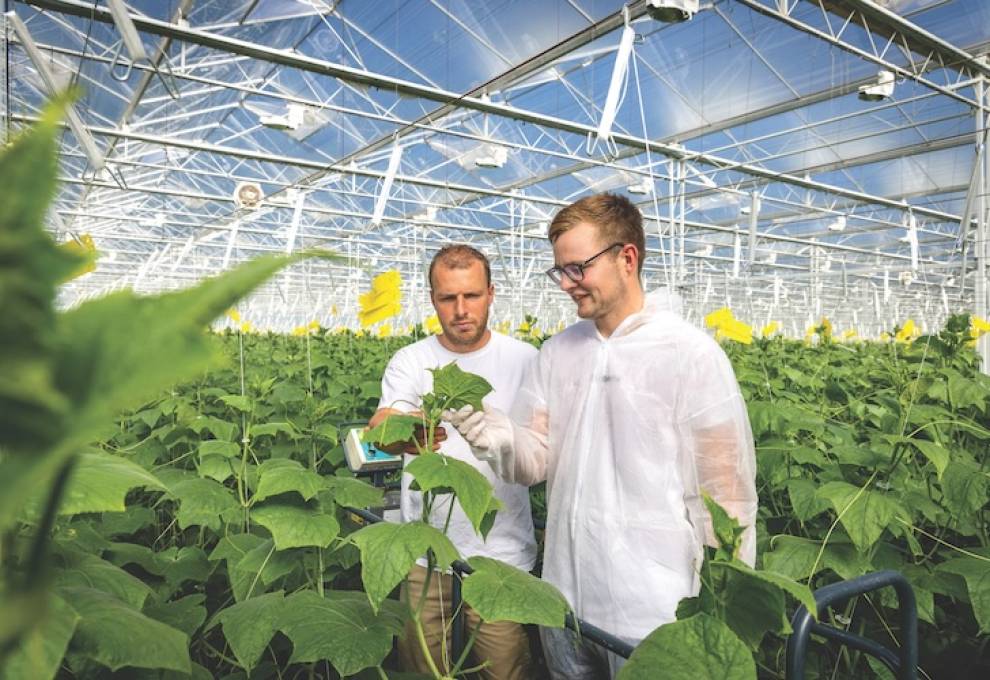
Cucumber Green Mottle Mosaic Virus (CGMMV) remains one of the most serious disease threats in commercial cucumber production. The contact-transmitted virus spreads easily via tools, hands, water, rodents, and even pests, creating the potential for rapid, devastating crop loss.
That’s why BASF's vegetable seeds business, operating in the market under the Nunhems brand, focuses its fresh cucumber breeding and technical services on helping growers minimize this risk through CGMMV-resistant varieties and integrated crop management support.
“In high-wire systems, CGMMV can derail months of investment in pruning, lowering, and crop management,” according to Robert Swinkels, high tech cucumber breeder at BASF | Nunhems. “Resistant varieties give growers a critical layer of protection against this risk.”
CGMMV infection causes stunting, fruit blemishes, and yield losses often exceeding 30 to 40 per cent in heavily potentially infected greenhouses, says Swinkels. The economic impact can potentially reach to more than $100,000 per acre per season, especially in long-cycle or high-wire crops where replanting isn’t feasible, according to Swinkels.
BASF | Nunhems began its CGMMV resistance breeding program in response to grower demand, with resistant varieties entering the market in the following years.
“Resistance is only valuable if it comes with the yield potential, fruit quality and plant vigour growers need,” said Swinkels. The BASF | Nunhems breeding team continues to close the gap between resistant and susceptible varieties to minimize production trade-offs.
CGMMV-resistant genetics, while critical, aren’t the sole solution.
“Resistance is one tool. It must be combined with good hygiene, crop monitoring, and greenhouse management to be fully effective,” says Marcel Huibers, global agro-technologist at BASF | Nunhems.
To help, BASF | Nunhems supports growers through technical collaboration, offering guidance on:
- - Sanitation protocols: disinfecting tools, knives, and greenhouse equipment.
- - Pest and rodent control: reducing alternative vectors of spread.
- - Substrate management: advising on when to replace or sanitize slabs.
- - Early detection: water testing services that can detect CGMMV before symptoms appear in plants.
“Think of CGMMV resistance as crop insurance built into the seed,” Swinkels said. “It’s indispensable security for modern cucumber production.”
Source: BASF/Nunhems October 9, 2025 news release

